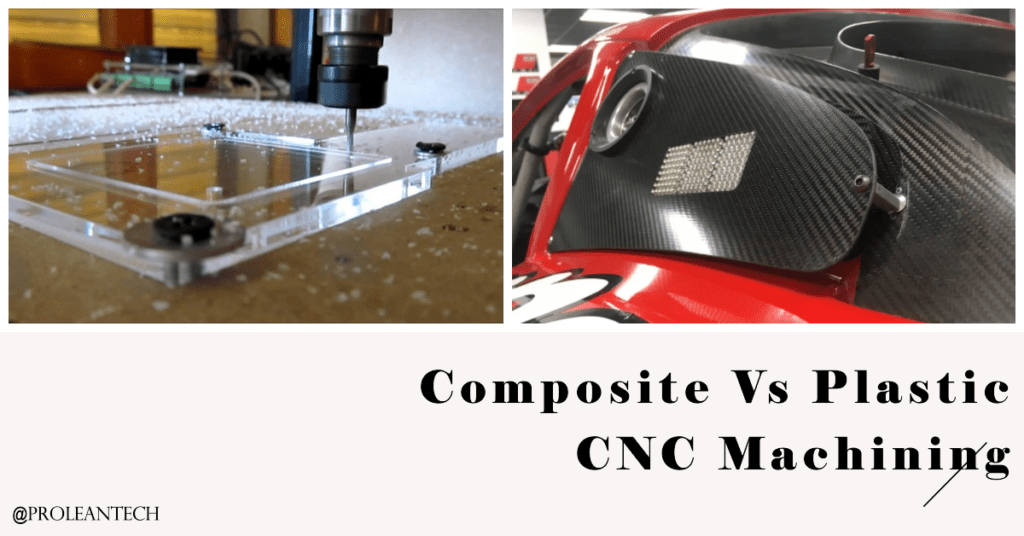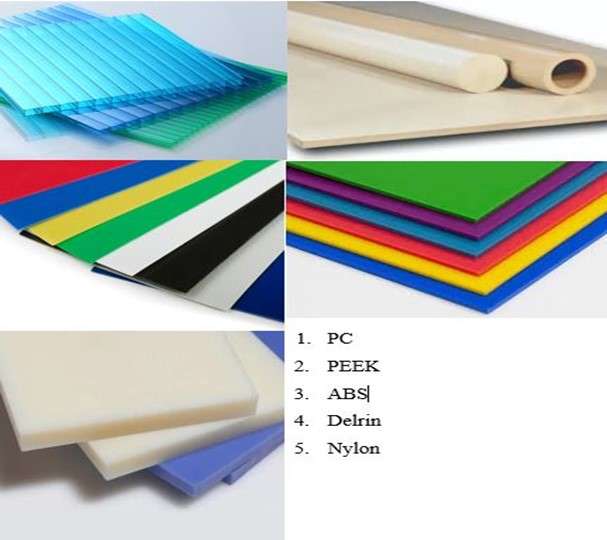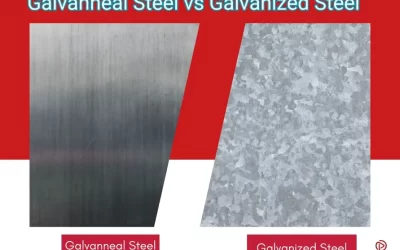
CNC machining, a popular manufacturing method, is lauded for its precision, efficiency, and versatility. This procedure can handle a wide range of materials, with composite and plastic being two types often considered in manufacturing projects. Distinguishing the operational parameters and factors for choosing between composite and plastic can significantly enhance the effectiveness of your endeavors in manufacturing.
Plastics and composites have distinct characteristics that affect their use in CNC machining. Factors such as composition, mechanical properties, cost, and application determine their selection for different projects. Understanding these parameters can lead to better optimization of the CNC machining process for maximum efficiency and output. Therefore, this article seeks to provide an in-depth comparison between composite and plastic CNC machining.
An Overview of Composite CNC Machining
Composites are materials made from two or more distinct components with different physical or chemical properties that, when combined, produce a material with characteristics different from those of the individual components. In CNC machining, composite materials often refer to fiber-reinforced plastics, where the fibers provide strength and stiffness, and the plastic matrix provides shape and protects the fibers.
Composite CNC machining is a specialized process that requires a good understanding of the composite material’s properties. Composites are generally more challenging to machine than plastics due to reinforcing fibers, which can cause tool wear and tear. However, the resulting machined parts are often more durable and lighter, making them preferred in aerospace, automotive, and sports equipment manufacturing industries.
Table 1: Key Features of Composite CNC Machining
| Feature | Explanation |
|---|---|
| Material Properties | Composites are stronger and stiffer yet lighter than many metals and plastics due to their fiber reinforcement. |
| Tool Wear | Machining composites can cause more tool wear due to the abrasive nature of the reinforcing fibers. |
| Machined Parts | The parts machined from composites are often more durable and lighter than their plastic counterparts. |
| Industry Applications | Composites are widely used in aerospace, automotive, and sports equipment due to their unique properties. |
The Intricacies of Plastic CNC Machining

CNC machining of plastics involves removing material from plastic workpieces to create desired parts or products. Plastic, being softer and less abrasive than most composites and metals, is often more accessible to machines, causing less tool wear. This, in turn, results in reduced tooling costs and increased machinery lifespan.
CNC Plastic machining is versatile and applicable to many plastic materials, including ABS, nylon, polypropylene, and more. Each type of plastic has unique properties that influence its suitability for different applications. Factors such as heat resistance, impact strength, and cost come into play when choosing the right plastic for CNC machining.
Table 2: Key Features of Plastic CNC Machining
| Feature | Explanation |
|---|---|
| Material Properties | Plastics come in a wide range of types, each with unique properties, such as heat resistance, impact strength, and flexibility. |
| Tool Wear | Machining plastics generally produce less tool wear than composites, increasing tool lifespan. |
| Machined Parts | Plastic machined parts are versatile and applicable in a myriad of industries, such as electronics, medical, and consumer goods. |
| Industry Applications | Plastic CNC machining is commonly used in electronics, medical devices, and consumer goods due to the versatility of plastic materials. |
Comparing Operational Parameters: Composite VS Plastic CNC Machining
Drawing comparisons between composite and plastic CNC machining requires understanding each’s distinctive operational parameters. These parameters include the material removal rate, tool wear, tolerance levels, cooling needs, and machine feed rates.
Composite CNC machining typically requires slower feed rates and higher spindle speeds, considering the hardness and abrasiveness of the reinforcing fibers. The material removal rate is normally slower, and tools may wear out more quickly. Therefore, periodic tool changes and careful machining process monitoring are vital when working with composites.
On the other hand, plastic CNC machining allows for faster feed rates and lower spindle speeds due to the softer nature of the material. Material removal is more rapid, and tool wear is significantly reduced compared to composite machining. Thus, plastic CNC machining often results in quicker project turnaround and lower operational costs.
Table 3: Operational Parameters for Composite VS Plastic CNC Machining
| Parameter | Composite CNC Machining | Plastic CNC Machining |
|---|---|---|
| Feed Rates | Typically slower due to the hardness of the material | Faster due to the softer nature of the material |
| Spindle Speeds | Higher to handle the harder material | Lower due to the softer material |
| Rate of Material Removal | Slower due to hardness and abrasiveness | Faster due to the softer material |
| Tool Wear | Greater due to abrasive fibers | Less, leading to lower tooling costs |
| Cooling Needs | Often requires coolants to avoid overheating | May or may not need coolants depending on the plastic type |
Try Prolean Now!
Selection Considerations: Composite VS Plastic CNC Machining
Choosing between composite and plastic CNC machining is influenced by factors such as desired mechanical properties, weight considerations, budget, and end-product application.
Composite CNC machining is usually preferred when the high strength-to-weight ratio, stiffness, and resistance to various environmental factors are critical. Industries such as aerospace, automotive, and sporting goods often favor composites due to these superior properties. However, the cost factor associated with composite machining is higher due to increased tool wear and slower machining rates.
Conversely, plastic CNC machining is the go-to choice when factors like versatility, lower cost, and easier machining are primary considerations. The wide variety of plastic types makes plastic CNC machining suitable for various applications, including electronics, medical devices, and consumer goods.
Table 4: Selection Considerations for Composite VS Plastic CNC Machining
| Consideration | Composite CNC Machining | Plastic CNC Machining |
|---|---|---|
| Mechanical Properties | Higher strength and stiffness | Depends on the type of plastic; some may offer strength, flexibility, or both |
| Weight | Lighter parts due to high strength-to-weight ratio | Weight depends on the type of plastic; some are lighter than others |
| Cost | Higher due to increased tool wear and slower machining | Lower due to less tool wear and faster machining |
| End-product Application | Preferred in aerospace, automotive, sports equipment | Commonly used in electronics, medical devices, consumer goods |
These operational parameters and considerations form the foundation for making informed decisions when choosing between composite and plastic CNC machining for any given
Best Practices in Composite and Plastic CNC Machining
Adherence to best practices in composite and plastic CNC machining is crucial for achieving optimal results. These practices include tool selection, programming, handling, and safety.
For composite CNC machining, it’s imperative to use tools designed for composite materials to enhance cutting performance and extend tool life. Regularly monitoring tool wear and timely replacement is also essential. Programmed paths should be precise to minimize errors, and composite materials must be handled carefully due to their brittleness.
In plastic CNC machining, ensuring the correct chip load is vital to prevent melting or warping of the plastic. A good rule of thumb is to use sharper tools and more flutes for softer plastics and fewer flutes for harder ones. Lastly, maintaining a clean work area is crucial as plastic chips can pose a fire hazard if not properly managed.
Table 5: Best Practices for Composite and Plastic CNC Machining
| Best Practices | Composite CNC Machining | Plastic CNC Machining |
|---|---|---|
| Tool Selection | Use tools designed for composites | Select tools based on plastic hardness |
| Monitoring and Replacement | Monitor tool wear regularly | Prevent plastic melting with correct chip load |
| Handling | Handle with care due to brittleness | Maintain a clean work area due to fire hazard |
| Safety | Wear appropriate protective equipment | Ensure proper ventilation due to potential toxic fumes |
The Role of Prolean’s CNC Machining Services
Prolean’s CNC Machining Services can cater to all your composite and plastic CNC machining needs. We leverage state-of-the-art technology and skilled technicians to deliver parts with high precision and quality.
Whether you need complex composite parts for aerospace applications or versatile plastic components for electronics, our team has the experience and resources to meet your requirements. At Prolean, we focus on customer satisfaction, competitive pricing, and fast turnaround times, making us a reliable partner in all your CNC machining projects.
Conclusion
When choosing between composite and plastic CNC machining, several factors, such as the desired properties of the final product, cost considerations, and operational parameters, must be considered. Both machining methods offer unique advantages and are more suitable for specific applications than others. Always remember that the choice should be based on your project’s specific needs and requirements.
FAQs
What is CNC Machining?
CNC Machining is a manufacturing process that uses computer-programmed machines to create precise parts and components from various materials.
What’s the difference between Composite and Plastic CNC Machining?
The primary difference lies in the materials they handle. Composite CNC Machining processes composite materials composed of a mixture of materials, while Plastic CNC Machining handles various types of plastics.
What are some considerations when choosing between Composite and Plastic CNC Machining?
Considerations include desired properties of the final product, cost, and operational parameters such as material removal rate, tool wear, and machining speed.
What are some applications of Composite CNC Machining?
Composite CNC Machining is commonly used in aerospace, automotive, and sports equipment due to its high strength-to-weight ratio and stiffness.
Where is Plastic CNC Machining commonly used?
Plastic CNC Machining is versatile and finds applications in various sectors, including electronics, medical devices, and consumer goods.




0 Comments